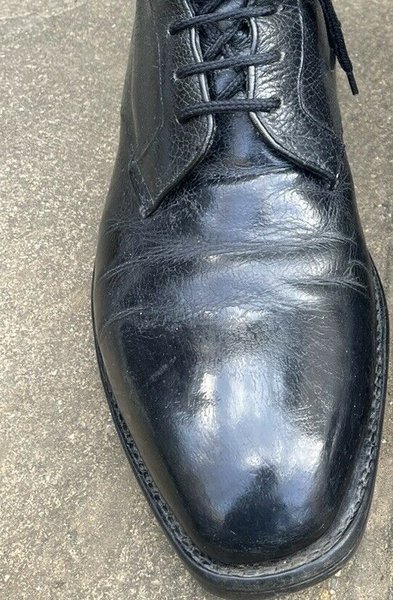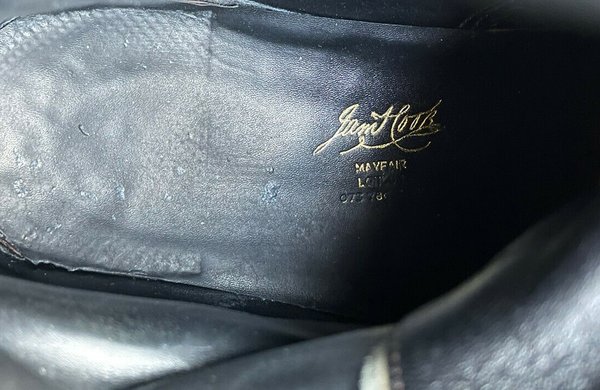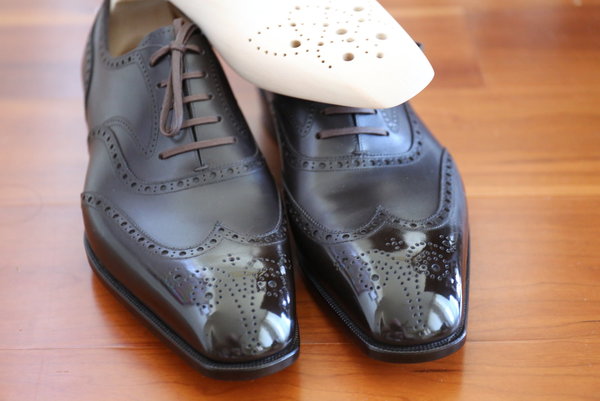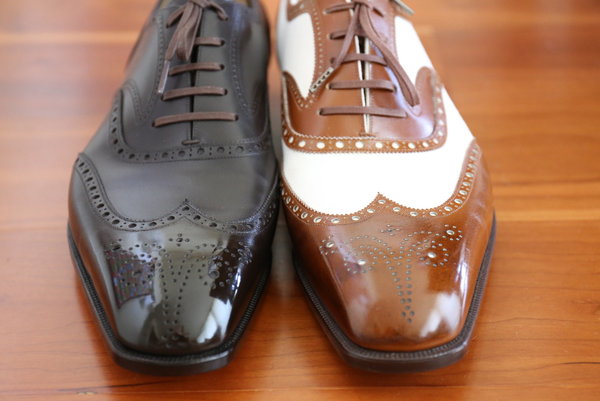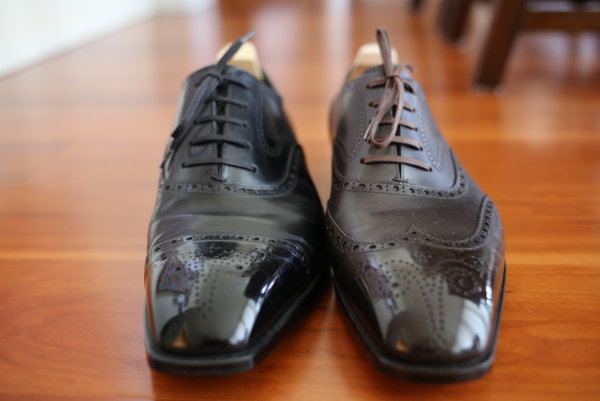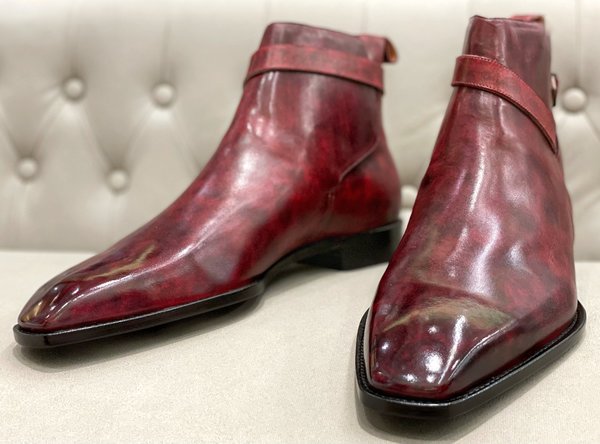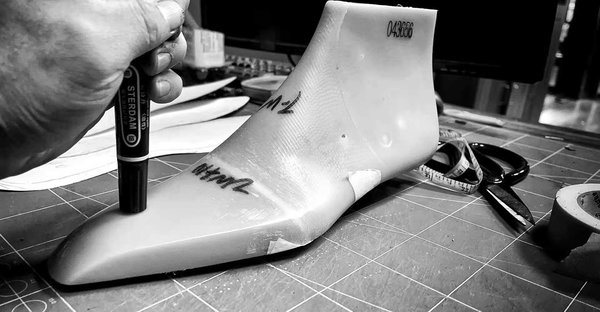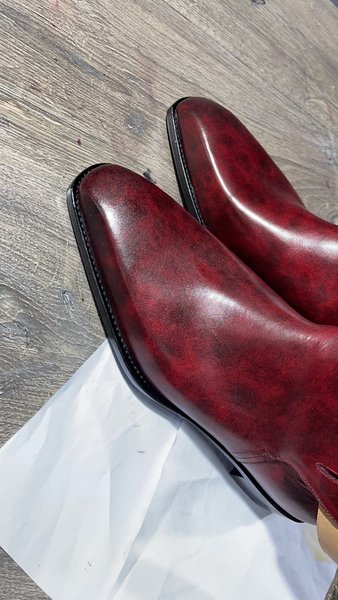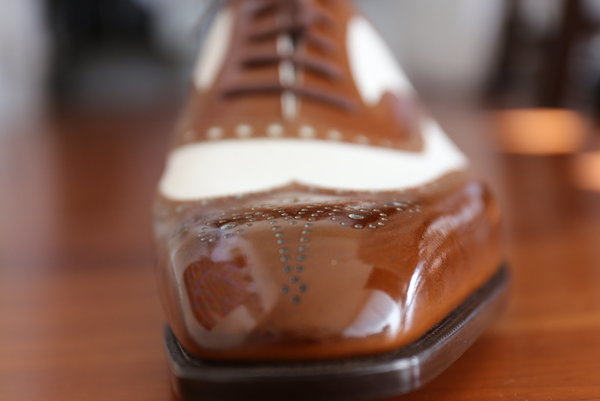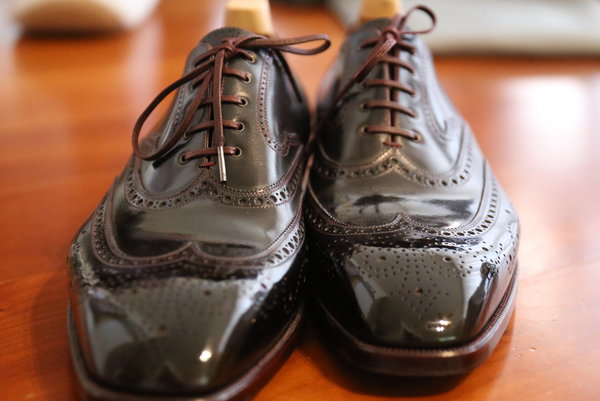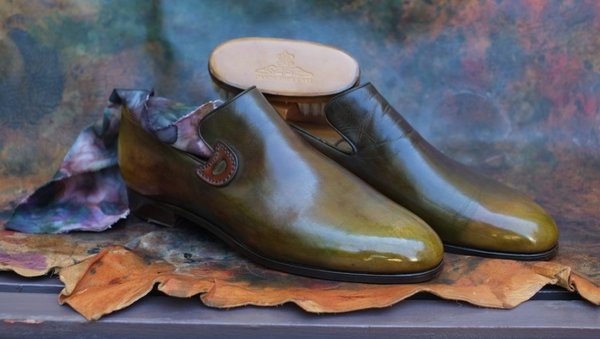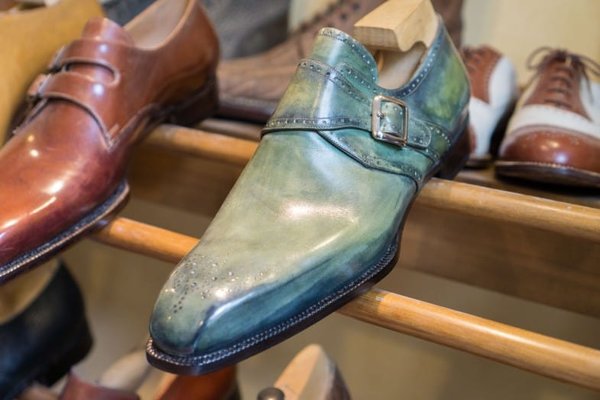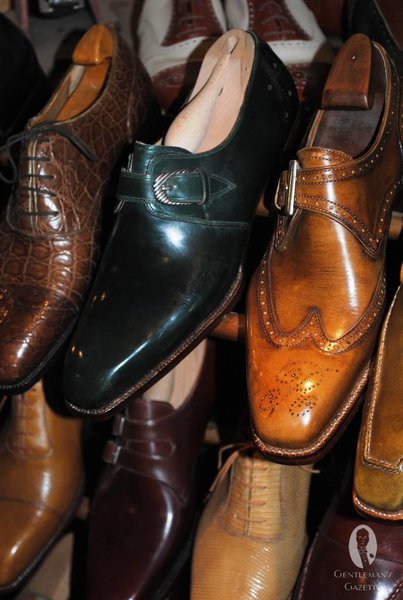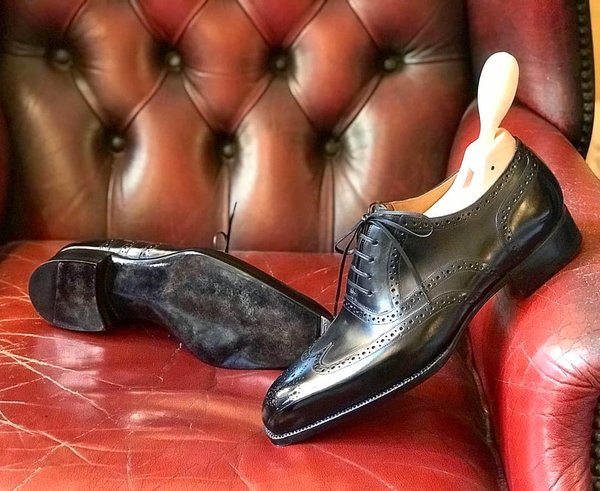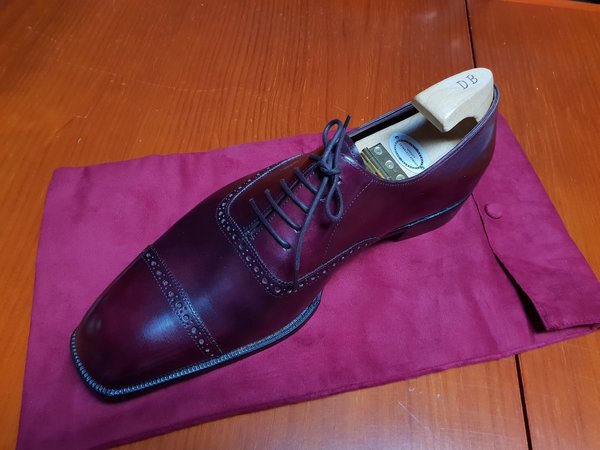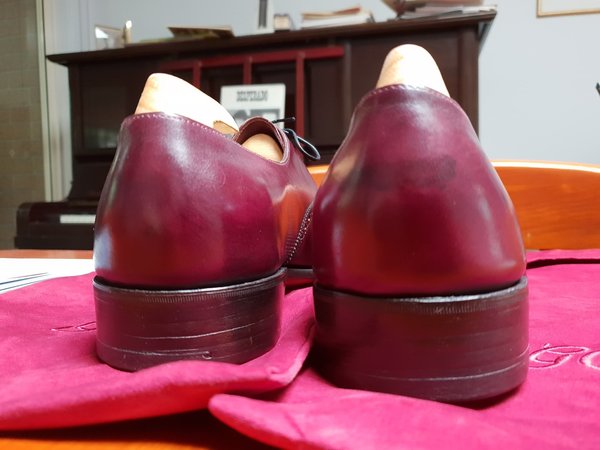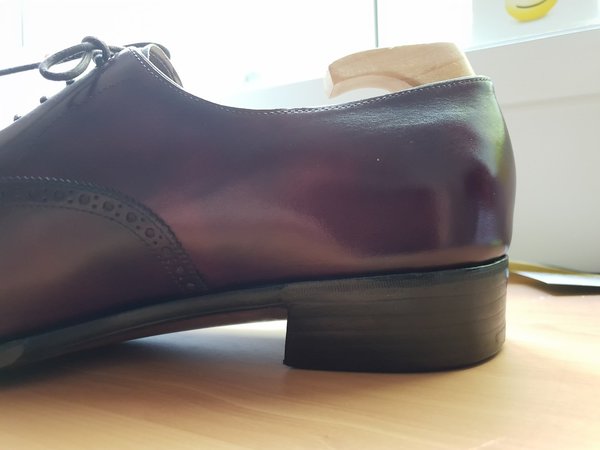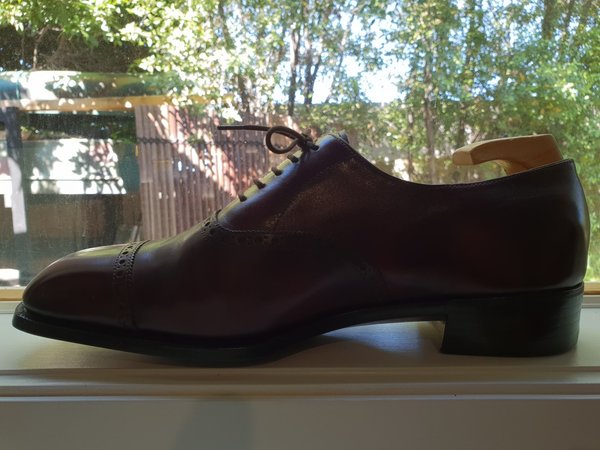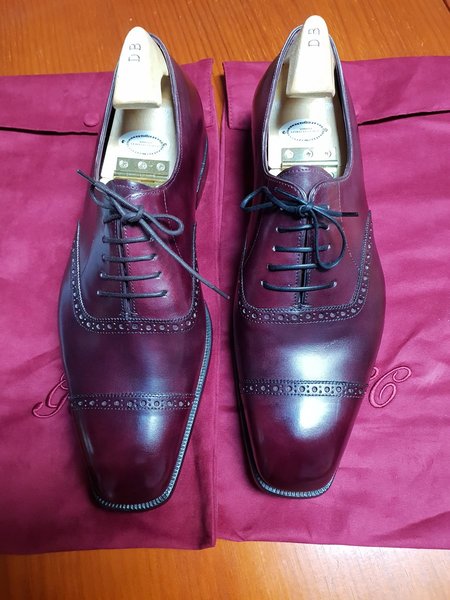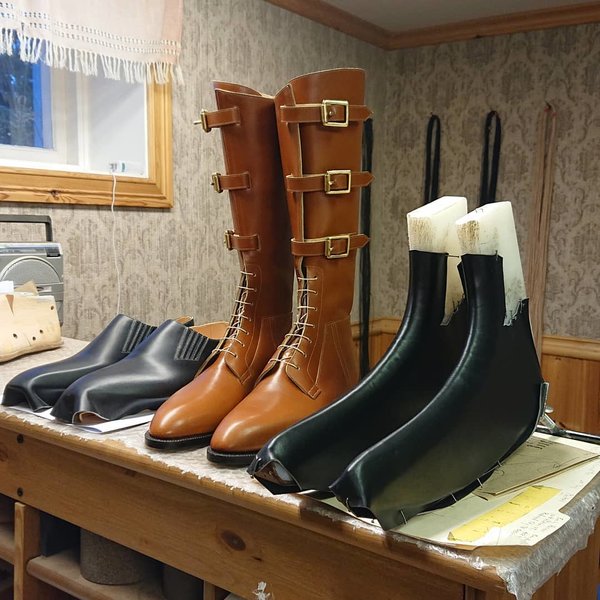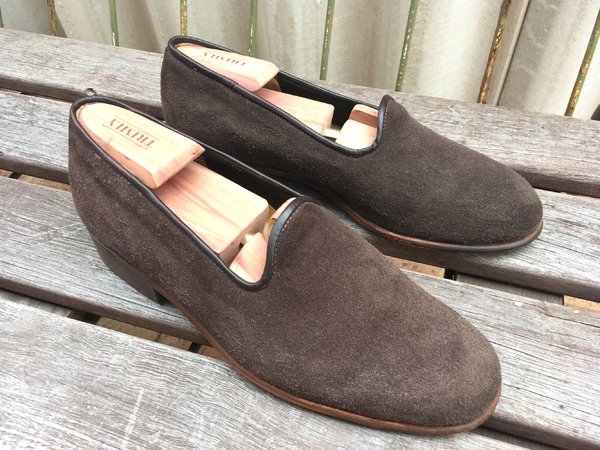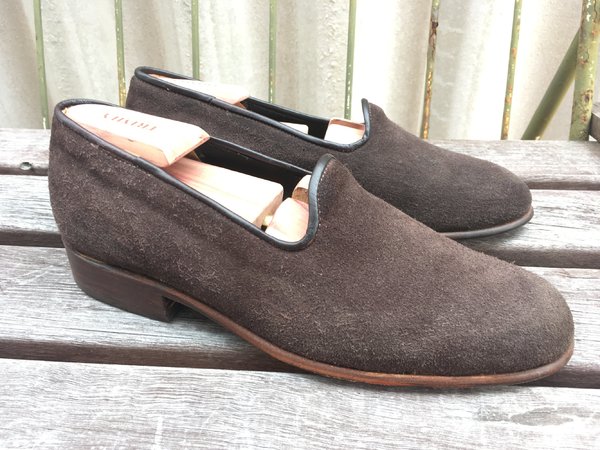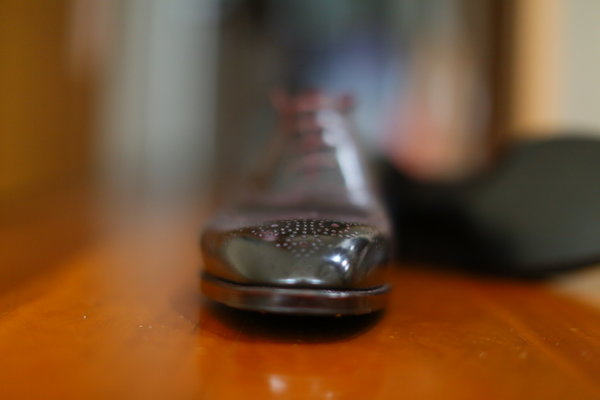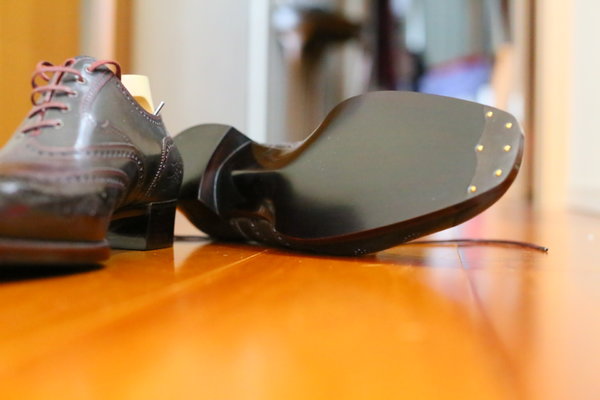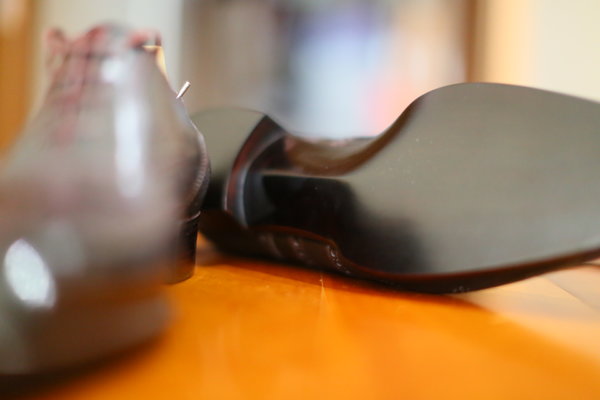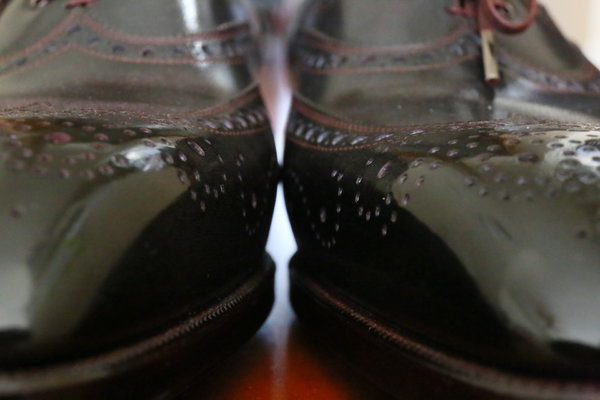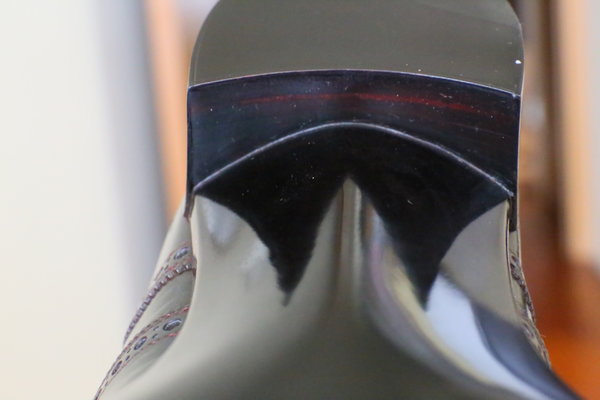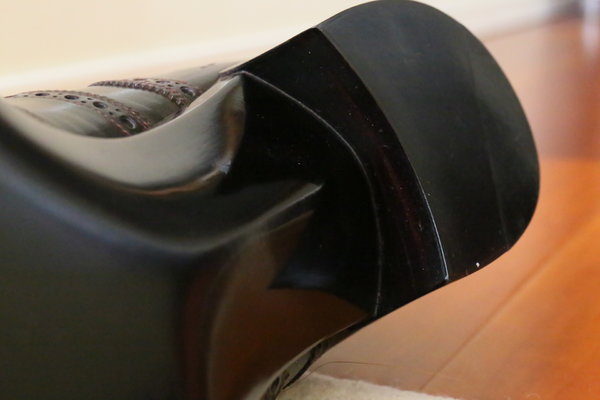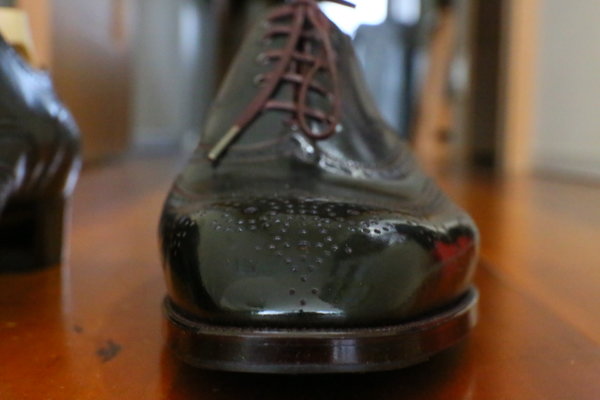Support the forum
Navigation
-
- Men's Style
- Classic Menswear
- Streetwear and Denim
- Preorders, Group Made-to-order, trunk shows, and o
- Menswear Advice
- Former Affiliate Vendor Threads; a Locked Forum.
- Career and job listings in fashion, mens clothing,
-
- American Trench
- AMIDÉ HADELIN
- Archibald London
- The Armoury
- Arterton
- Besnard
- Canoe Club
- Capra Leather
- Carmina
- Cavour
- Crush Store
- De Bonne Facture
- Drinkwater's Cambridge
- Drop93
- eHABERDASHER
- Enzo Custom
- Epaulet
- Exquisite Trimmings
- Fils Unique
- Gentlemen's Footwear
- Giin
- Grant Stone
- House of Huntington
- IsuiT
- John Elliott
- Jonathan Abel
- Kent Wang
- Kirby Allison
- Larimars Clothing
- Lazy Sun
- LuxeSwap
- Luxire Custom Clothing
- Nicks Boots
- No Man Walks Alone
- Once a Day
- Passus shoes
- Proper Cloth
- SARTORIALE
- SEH Kelly
- Self Edge
- Shop the Finest
- Skoaktiebolaget
- Spier and MacKay
- Standard and Strange
- Bespoke Shoemaker Szuba
- Taylor Stitch
- TLB Mallorca
- UNI/FORM LA
- Vanda Fine Clothing
- Von Amper
- Wrong Weather
- Yeossal
- Zam Barrett
Install the app
More options
-
Hi, I am the owner and main administrator of Styleforum. If you find the forum useful and fun, please help support it by buying through the posted links on the forum. Our main, very popular sales thread, where the latest and best sales are listed, are posted HERE
Purchases made through some of our links earns a commission for the forum and allows us to do the work of maintaining and improving it. Finally, thanks for being a part of this community. We realize that there are many choices today on the internet, and we have all of you to thank for making Styleforum the foremost destination for discussions of menswear. -
This site contains affiliate links for which Styleforum may be compensated.
-
STYLE. COMMUNITY. GREAT CLOTHING.
Bored of counting likes on social networks? At Styleforum, you’ll find rousing discussions that go beyond strings of emojis.
Click Here to join Styleforum's thousands of style enthusiasts today!
Styleforum is supported in part by commission earning affiliate links sitewide. Please support us by using them. You may learn more here.
You are using an out of date browser. It may not display this or other websites correctly.
You should upgrade or use an alternative browser.
You should upgrade or use an alternative browser.
The Ultimate "HARDCORE" Shoe Appreciation Thread (Bespoke only)
rabiesinfrance
Senior Member
- Joined
- Jun 8, 2010
- Messages
- 373
- Reaction score
- 17
No evidence prior to the last quarter of the 16th century i.e. 1575 - 1600.
However you look at it it's splitting hairs.
However you look at it it's splitting hairs.
- Joined
- Jan 8, 2008
- Messages
- 10,132
- Reaction score
- 5,714
Who is Aurora history? How many pairs of shoes have they looked at over the last 60 years (assuming June Swann is 80 and has done this her whole life, that's how long she's at it). How many digs have they been on?
For that matter do they have an in-depth technical knowledge of how shoes are/were made such that they can interpret second tier evidence such as engravings and illustrations and paintings, and so forth?
I've seen that scenario so many times it gets a little old--some one sees a painting or a sculpture and wanting to believe one thing or the other, interprets it with no real knowledge of the time, the culture, the possibilities.
People look at a leine and see a kilt.Sure it's a common and easy to understand mistake but it's a mistake based on ignorance.
I am sure that June Swann has seen all the evidence...spurious or otherwise...all the evidence, all the paintings and illuminated manuscripts and so forth--this was/is her life. If there was any real evidence for heels prior to the late 16th century I can see no reason why she would not acknowledge it. If nothing else it would be a feather in her academic cap.
I might also add that the head of the Shoemaking faculty at Colonial Williamsburg , and maybe the foremost shoe historian/authority in the US, agrees wholeheartedly with June Swann. I personally know that he visits digs all over the world and has yet seen anything to convince him otherwise.
Believe me, I know where you (and others) are coming from. I'd like to believe heels date from earlier. It would fit so much better into my, admittedly, speculative image of history.
But like the saying goes..."if there's no photos, it didn't happen." If there's no hard evidence, it has to be classified as fantasy.
I suspect we all need to remember that there's more mis-information on the internet than there is real information.
I think she's wrong.
I do hate the...because there's no evidence, it must be so...argument. The correct answer is that we should keep an 'open mind' when it comes to such things, and wait for the evidence to turn up. Problem is that academics make careers out of there being no evidence, and their credibility depends on it. It breeds an arrogant attitude.
http://blog.aurorahistoryboutique.com/tag/medieval-history/
Who is Aurora history? How many pairs of shoes have they looked at over the last 60 years (assuming June Swann is 80 and has done this her whole life, that's how long she's at it). How many digs have they been on?
For that matter do they have an in-depth technical knowledge of how shoes are/were made such that they can interpret second tier evidence such as engravings and illustrations and paintings, and so forth?
I've seen that scenario so many times it gets a little old--some one sees a painting or a sculpture and wanting to believe one thing or the other, interprets it with no real knowledge of the time, the culture, the possibilities.
People look at a leine and see a kilt.Sure it's a common and easy to understand mistake but it's a mistake based on ignorance.
I am sure that June Swann has seen all the evidence...spurious or otherwise...all the evidence, all the paintings and illuminated manuscripts and so forth--this was/is her life. If there was any real evidence for heels prior to the late 16th century I can see no reason why she would not acknowledge it. If nothing else it would be a feather in her academic cap.
I might also add that the head of the Shoemaking faculty at Colonial Williamsburg , and maybe the foremost shoe historian/authority in the US, agrees wholeheartedly with June Swann. I personally know that he visits digs all over the world and has yet seen anything to convince him otherwise.
Believe me, I know where you (and others) are coming from. I'd like to believe heels date from earlier. It would fit so much better into my, admittedly, speculative image of history.
But like the saying goes..."if there's no photos, it didn't happen." If there's no hard evidence, it has to be classified as fantasy.
I suspect we all need to remember that there's more mis-information on the internet than there is real information.
Last edited:
- Joined
- Jan 8, 2008
- Messages
- 10,132
- Reaction score
- 5,714
It was my mistake...I am not an academic....I should have said mid to late 16th century. 1560's is the right time frame.
No evidence prior to the last quarter of the 16th century i.e. 1575 - 1600.
However you look at it it's splitting hairs.
It was my mistake...I am not an academic....I should have said mid to late 16th century. 1560's is the right time frame.
rabiesinfrance
Senior Member
- Joined
- Jun 8, 2010
- Messages
- 373
- Reaction score
- 17
Link was useful simply as shot at what's out there. The painting is more suggestive! It's a feather in my cap, sir, if it can be proved! It's not physical evidence though. Long story, but a mate of mine dug a Roman shoe 'workshop' in London, England. Found stuff that suggested heels. Not definitive.
I have the same academic training, and am also an archaeologist. Once saw a Viking leather knife scabbard fresh from the spoil heap in Dublin, Ireland. A real beauty.
Medieval peasant ploughing with Oxen, pushing them along. Of course he had heeled boots!
I have the same academic training, and am also an archaeologist. Once saw a Viking leather knife scabbard fresh from the spoil heap in Dublin, Ireland. A real beauty.
Medieval peasant ploughing with Oxen, pushing them along. Of course he had heeled boots!
Last edited:
- Joined
- Mar 23, 2002
- Messages
- 4,626
- Reaction score
- 1,285
Jan van Eyck “Arnolfini Portrait” (also known as “Arnolfini Wedding”) - dated 1434
http://www.nationalgallery.org.uk/paintings/jan-van-eyck-the-arnolfini-portrait
That looks pretty much like a pair of heels to me:

Not quite - June Swann MBE (former Keeper of the Boot and Shoe Collection, Northampton Museum)
http://en.wikipedia.org/wiki/Order_of_the_British_Empire
http://www.nationalgallery.org.uk/paintings/jan-van-eyck-the-arnolfini-portrait
That looks pretty much like a pair of heels to me:

Dame Swann.
Not quite - June Swann MBE (former Keeper of the Boot and Shoe Collection, Northampton Museum)
http://en.wikipedia.org/wiki/Order_of_the_British_Empire
- Joined
- Jan 8, 2008
- Messages
- 10,132
- Reaction score
- 5,714
I believe those are "pattens". They are worn over shoes to keep shoes and feet out of the mud. If I am correct this is exactly the kind of misinterpretation June talks about.
I might also remark that my caveat was "as we know them."
Jan van Eyck “Arnolfini Portrait” (also known as “Arnolfini Wedding”) - dated 1434
http://www.nationalgallery.org.uk/paintings/jan-van-eyck-the-arnolfini-portrait
That looks pretty much like a pair of heels to me:

I believe those are "pattens". They are worn over shoes to keep shoes and feet out of the mud. If I am correct this is exactly the kind of misinterpretation June talks about.
I might also remark that my caveat was "as we know them."
Last edited:
- Joined
- Mar 23, 2002
- Messages
- 4,626
- Reaction score
- 1,285
They are probably clogs, 'proper' footwear, I cannot believe, some old mud-kickers would have been featured in this portrait, where nothing is present by chance. There are quite a few cultures where shoes/footwear have sexual meaning.
But, leaving that aside...............what is a 'heel' on footwear?
If we define it as a device to place the heel (of the foot) higher than the ball (of the foot), then this footwear fulfils the requirement: of a 'heel': the ball is placed distinctly lower than the heel (of the wearer).
I believe those are "pattens". They are worn over shoes to keep shoes and feet out of the mud."
They are probably clogs, 'proper' footwear, I cannot believe, some old mud-kickers would have been featured in this portrait, where nothing is present by chance. There are quite a few cultures where shoes/footwear have sexual meaning.
According to Harbison , the removal of shoes associated with the candle and the statue of St Margaret could all reflect “the couple’s love, sexual union, and the fruitfulness of the woman.
But, leaving that aside...............what is a 'heel' on footwear?
If we define it as a device to place the heel (of the foot) higher than the ball (of the foot), then this footwear fulfils the requirement: of a 'heel': the ball is placed distinctly lower than the heel (of the wearer).
Last edited:
rabiesinfrance
Senior Member
- Joined
- Jun 8, 2010
- Messages
- 373
- Reaction score
- 17
In all probability there were shoes and boots going way back when with heels, the point is whether they were in common use or not. That, I think, is a far more interesting point. Let Occam's Razor be your guide!
Last edited:
- Joined
- Jan 8, 2008
- Messages
- 10,132
- Reaction score
- 5,714
They are not clogs. Forgive me, but you seem to be dismissing something you don't understand. There is a whole website here devoted to paintings of pattens. and in fact this painting from which the above pattens were taken was done by Jan van Eyck and is accompanied by the following description;
"Portrait of Giovanni Arnolfini and his Wife by Jan van Eyck, 1434
Both Giovanni and Giovanna have taken off their pattens -- they're indoors, after all. His wooden pattens are better visible in this detail, and hers, slightly more elegant and covered with red leather (or cloth?) are easier to find in this detail."
Here are just a few of the many illustrations, paintings and...ahem...insights into pattens.



That may be a good layman's definition but it's not technically correct nor is it correct from the standpoint of the shoemaker. Pardon me if I point out the obvious but this is again a matter of misinterpretation. If nothing else, and I can only speak as a shoemaker not for June Swann, the heel must be an integral part of the shoe.The fact that all these pattens are being worn with heel-less shoes tells you that heels are not part of the shoe concept yet.
They are probably clogs, 'proper' footwear, I cannot believe, some old mud-kickers would have been featured in this portrait, where nothing is present by chance. There are quite a few cultures where shoes/footwear have sexual meaning.
They are not clogs. Forgive me, but you seem to be dismissing something you don't understand. There is a whole website here devoted to paintings of pattens. and in fact this painting from which the above pattens were taken was done by Jan van Eyck and is accompanied by the following description;
"Portrait of Giovanni Arnolfini and his Wife by Jan van Eyck, 1434
Both Giovanni and Giovanna have taken off their pattens -- they're indoors, after all. His wooden pattens are better visible in this detail, and hers, slightly more elegant and covered with red leather (or cloth?) are easier to find in this detail."
Here are just a few of the many illustrations, paintings and...ahem...insights into pattens.



But, leaving that aside...............what is a 'heel' on footwear?
If we define it as a device to place the heel (of the foot) higher than the ball (of the foot), then this footwear fulfils the requirement: of a 'heel': the ball is placed distinctly lower than the heel (of the wearer).
That may be a good layman's definition but it's not technically correct nor is it correct from the standpoint of the shoemaker. Pardon me if I point out the obvious but this is again a matter of misinterpretation. If nothing else, and I can only speak as a shoemaker not for June Swann, the heel must be an integral part of the shoe.The fact that all these pattens are being worn with heel-less shoes tells you that heels are not part of the shoe concept yet.
Last edited:
- Joined
- Jan 8, 2008
- Messages
- 10,132
- Reaction score
- 5,714
No evidence...it didn't happen. One of the reasons there is so much dreck on the net is because people conceive ideas that have no basis in reality or substantiating evidence and then make up scenarios to support those ideas.
Maybe there were heels everywhere. Maybe kilts were worn in the time of William Wallace. Maybe wrist watches were invented in 900AD. Maybe pigs do fly.
It's all fantasy until you can prove it. That's the point. Not what might have been...not what we wish it were.
In all probability there were shoes and boots going way back when with heels, the point is whether they were in common use or not. That, I think, is a far more interesting point. Let Occam's Razor be your guide!
No evidence...it didn't happen. One of the reasons there is so much dreck on the net is because people conceive ideas that have no basis in reality or substantiating evidence and then make up scenarios to support those ideas.
Maybe there were heels everywhere. Maybe kilts were worn in the time of William Wallace. Maybe wrist watches were invented in 900AD. Maybe pigs do fly.
It's all fantasy until you can prove it. That's the point. Not what might have been...not what we wish it were.
- Joined
- Mar 23, 2002
- Messages
- 4,626
- Reaction score
- 1,285
Where is your evidence for any additional footwear worn by the Arnolfinis?

Giovanni Arnolfini stands there in his sock. Do you really think that was an oversight by the artist?
Particular in a painting, where the whole iconography is worked out in the smallest detail.

Here are her shoes. Those are sandals which could be still worn today. Again the heel is higher than the ball
(not by a great deal, but nevertheless). In modern terminology we can talk about 'a slight wedge heel'.
Can you give me an explanation, why the couple, wearing their Sunday-best, wanted to be featured with their mud-kickers? Those filthy and stinking pattens would have been left just inside the house at the door and not taken into their bedchamber. The footwear they have taken off, might have been their ‘slippers’ to potter about the house, but there is no evidence those would have been worn with additional footwear.
Outside the house, things might have been totally different.
------------------------------------------------------------------------------------------
Those are pattens (utility footwear) of the Regency period. I cannot imagine anyone wanting to show off those.

http://www.janeausten.co.uk/magazine/page.ihtml?pid=456&step=4
No evidence...it didn't happen.
Where is your evidence for any additional footwear worn by the Arnolfinis?

Giovanni Arnolfini stands there in his sock. Do you really think that was an oversight by the artist?
Particular in a painting, where the whole iconography is worked out in the smallest detail.

Here are her shoes. Those are sandals which could be still worn today. Again the heel is higher than the ball
(not by a great deal, but nevertheless). In modern terminology we can talk about 'a slight wedge heel'.
Various features of The Arnolfini Portrait are associated with matrimony: the couple has removed their shoes in recognition of its sanctity, transforming the bedchamber into a holy place.
Can you give me an explanation, why the couple, wearing their Sunday-best, wanted to be featured with their mud-kickers? Those filthy and stinking pattens would have been left just inside the house at the door and not taken into their bedchamber. The footwear they have taken off, might have been their ‘slippers’ to potter about the house, but there is no evidence those would have been worn with additional footwear.
Outside the house, things might have been totally different.
------------------------------------------------------------------------------------------
Those are pattens (utility footwear) of the Regency period. I cannot imagine anyone wanting to show off those.

http://www.janeausten.co.uk/magazine/page.ihtml?pid=456&step=4
- Joined
- Jan 8, 2008
- Messages
- 10,132
- Reaction score
- 5,714
Look more closely. Giovanni is not wearing socks. Those "shoes" have a sole on them. Medieval shoes were often little more than leather "socks." At a guess, I'd say they look like typical turnshoes of the time.Look at more of the paintings from that time.
Rather than ask why the couple is standing around inside in their socks, ask why are all those other people running around outdoors in their "socks." If socks they are.
I don't know that we can say definitively that her pattens are higher at the heel. Although it is clear from the illustration sheet that pattens may have had heels that were higher than the ball of the foot. Her pattens however are shaped like medieval lasts--that typical hourglass shape that is so pinched in what we would call the waist.
You're missing an important part of the puzzle however and perhaps it is because you are not a maker. It was not self-evident, in the middle ages, how to support the heel in a leather shoe. Nor was it self-evident how to carve a last to make the foot comfortable at higher heel heights. Just as importantly, it wasn't self-evident how to incorporate a heel into a shoe...especially one made of soft leather with no arch/shank support.
It is one thing to carve a block of wood to fit under the foot it is quite another to make a heel on a shoe.
And after all of that, it's a red herring to talk about pattens or clogs. They aren't shoes. For all (and more ) of the reasons just mentioned.
I didn't invent pattens. Nor did I invent the way they were used. You're ordinarily pretty savvy on this stuff but I suspect you need to brush up on this one.
I would suggest Footwear of the Middle Ages
He talks about pattens too.
Where is your evidence for any additional footwear worn by the Arnolfinis?

Giovanni Arnolfini stands there in his sock. Do you really think that was an oversight by the artist?
Particular in a painting, where the whole iconography is worked out in the smallest detail.
Look more closely. Giovanni is not wearing socks. Those "shoes" have a sole on them. Medieval shoes were often little more than leather "socks." At a guess, I'd say they look like typical turnshoes of the time.Look at more of the paintings from that time.
Rather than ask why the couple is standing around inside in their socks, ask why are all those other people running around outdoors in their "socks." If socks they are.
I don't know that we can say definitively that her pattens are higher at the heel. Although it is clear from the illustration sheet that pattens may have had heels that were higher than the ball of the foot. Her pattens however are shaped like medieval lasts--that typical hourglass shape that is so pinched in what we would call the waist.
You're missing an important part of the puzzle however and perhaps it is because you are not a maker. It was not self-evident, in the middle ages, how to support the heel in a leather shoe. Nor was it self-evident how to carve a last to make the foot comfortable at higher heel heights. Just as importantly, it wasn't self-evident how to incorporate a heel into a shoe...especially one made of soft leather with no arch/shank support.
It is one thing to carve a block of wood to fit under the foot it is quite another to make a heel on a shoe.
And after all of that, it's a red herring to talk about pattens or clogs. They aren't shoes. For all (and more ) of the reasons just mentioned.
I didn't invent pattens. Nor did I invent the way they were used. You're ordinarily pretty savvy on this stuff but I suspect you need to brush up on this one.
I would suggest Footwear of the Middle Ages
He talks about pattens too.
Last edited:
- Joined
- Jun 1, 2006
- Messages
- 4,530
- Reaction score
- 83
nar the triple is , for me at least one step further than these
these are kind of triple?
dunno - could be i guess, but not in the JM Weston ideal
Classic Menswear Featured products
-
Carmina - Norwegian Derby Shoes Introducing the classy six eyelet split toe derby in a burgundy Shell Cordovan from Horween Chicago. This style features a single oak-bark tanned sole from Rendembach Jr. and full calf lining color brown.
-
 LuxeSwap Auction - Vintage Antique United States Naval Navy Denim Deck Jacket A piece for denim heads, vintage collectors, streetwear enthusiasts and menswear enthusiasts alike, this extremely rare early US Naval issued deck jacket in raw denim is not likely to ever show up at auction again anytime soon. A Haleys Comet of menswear items, offered at auction at a $9.99 starting bid with no reserve.
LuxeSwap Auction - Vintage Antique United States Naval Navy Denim Deck Jacket A piece for denim heads, vintage collectors, streetwear enthusiasts and menswear enthusiasts alike, this extremely rare early US Naval issued deck jacket in raw denim is not likely to ever show up at auction again anytime soon. A Haleys Comet of menswear items, offered at auction at a $9.99 starting bid with no reserve. -
 Kirby Allison - Luxury Suit Hanger - $32 Kirby Allison's Luxury Wooden Suit Hangers protect your suits from stretched collars and droopy shoulders. Our wooden suit hangers provide five-times more support than average hangers and will protect and extend the life of your most important garments.
Kirby Allison - Luxury Suit Hanger - $32 Kirby Allison's Luxury Wooden Suit Hangers protect your suits from stretched collars and droopy shoulders. Our wooden suit hangers provide five-times more support than average hangers and will protect and extend the life of your most important garments.
FEATURED PRODUCTS
-
 LuxeSwap Auction - Vintage Antique United States Naval Navy Denim Deck Jacket
A piece for denim heads, vintage collectors, streetwear enthusiasts and menswear enthusiasts alike, this extremely rare early US Naval issued deck jacket in raw denim is not likely to ever show up at auction again anytime soon. A Haleys Comet of menswear items, offered at auction at a $9.99 starting bid with no reserve.
LuxeSwap Auction - Vintage Antique United States Naval Navy Denim Deck Jacket
A piece for denim heads, vintage collectors, streetwear enthusiasts and menswear enthusiasts alike, this extremely rare early US Naval issued deck jacket in raw denim is not likely to ever show up at auction again anytime soon. A Haleys Comet of menswear items, offered at auction at a $9.99 starting bid with no reserve.
-
 Wellington Chore Boot - Special Introductory Price! $495
Introducing the latest addition to Nicks Handmade Boots collection: The Wellington Chore Boot. Engineered for the rigors of daily tasks, this boot is more than just footwear; it's a reliable companion for your everyday adventures. Crafted with convenience in mind, its effortless pull-on design ensures you're always ready to tackle whatever the day throws your way.
Wellington Chore Boot - Special Introductory Price! $495
Introducing the latest addition to Nicks Handmade Boots collection: The Wellington Chore Boot. Engineered for the rigors of daily tasks, this boot is more than just footwear; it's a reliable companion for your everyday adventures. Crafted with convenience in mind, its effortless pull-on design ensures you're always ready to tackle whatever the day throws your way.
-
Besnard - Made to Order Trousers - $351 Design your ideal pair of trousers by selecting a fabric, deciding between single or double pleats, choosing a zip or button fly, and opting for side adjusters or belt loops.
Latest posts
- Replies
- 5,478
- Views
- 1,267,772
- Replies
- 12,240
- Views
- 3,441,030
- Replies
- 52,101
- Views
- 6,592,685
- Replies
- 37,018
- Views
- 6,874,464
Similar threads
- Replies
- 130
- Views
- 126,663
- Replies
- 637
- Views
- 222,090
- Replies
- 1,320
- Views
- 202,408
Featured Sponsor
Forum Sponsors
- American Trench
- AMIDÉ HADELIN
- Archibald London
- The Armoury
- Arterton
- Besnard
- Canoe Club
- Capra Leather
- Carmina
- Cavour
- Crush Store
- De Bonne Facture
- Drinkwater's Cambridge
- Drop93
- eHABERDASHER
- Enzo Custom
- Epaulet
- Exquisite Trimmings
- Fils Unique
- Gentlemen's Footwear
- Giin
- Grant Stone
- House of Huntington
- IsuiT
- John Elliott
- Jonathan Abel
- Kent Wang
- Kirby Allison
- Larimars Clothing
- Lazy Sun
- LuxeSwap
- Luxire Custom Clothing
- Nicks Boots
- No Man Walks Alone
- Once a Day
- Passus shoes
- Proper Cloth
- SARTORIALE
- SEH Kelly
- Self Edge
- Shop the Finest
- Skoaktiebolaget
- Spier and MacKay
- Standard and Strange
- Bespoke Shoemaker Szuba
- Taylor Stitch
- TLB Mallorca
- UNI/FORM LA
- Vanda Fine Clothing
- Von Amper
- Wrong Weather
- Yeossal
- Zam Barrett
Members online
- yungr1
- ladislav.jancik
- oudwood
- bachatando
- mmmmmmm
- jbarwick
- M Parenti
- Lucky Strike
- pasadena man
- St1X
- TurboFrog
- blueberry7
- pmeis
- brokencycle
- trancebepopulate
- Texasmade
- Raz
- Budd
- dhizzy
- elbowtron
- GeorgeC
- REdinburgh
- CrimsonWave
- WaIIace
- abracadabra
- Kid_Icarus
- mikevac97
- Jr Mouse
- Warrengardner
- Ambulance Chaser
- otc
- NickInTO
- Gumpesteijn
- mlwdp
- Don L
- Steff_mat
- grenache
- AHS
- MrAristocat
- bcpc
- kakishiboo
- Loupetlapin
- shoeinvestor
- Fenners81
- shoefan57
- weriker
- Fulton
- officine
- Bob23Ire
- tnd
Total: 2,335 (members: 115, guests: 2,220)
